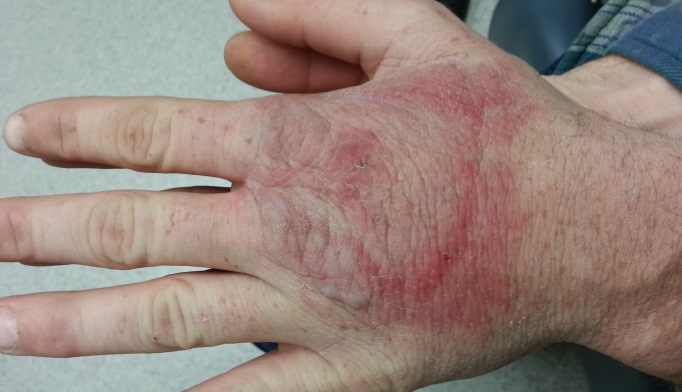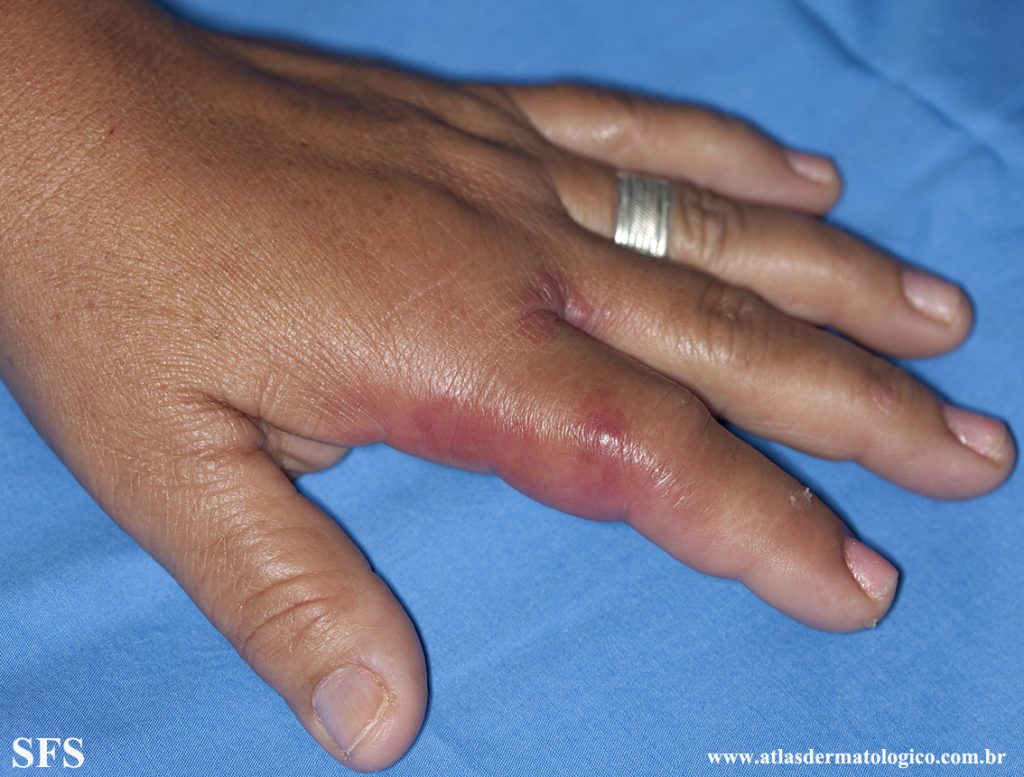
What is erysipeloid?
This acute infection of skin and soft tissue is caused by Erysipelothrix rhusiopathiae.
The organism is inoculated through broken skin, usually on the hand. The infection is
seen most often in individuals who are in contact with poultry, fish, crabs, or pigs, e.g.
fishermen, butchers, farmers, and vets. The organism remains viable for months in
decomposing material and can survive smoking or pickling.

What should I look for?
• Local pain, itching, burning, and swelling, usually on the hand or finger.
• A purplish red plaque, with demarcated raised borders, that expands peripherally
and clears centrally. occasionally, you may find >1 lesion.
• You may see blistering.
• Some patients have regional lymphadenopathy.
• Systemic symptoms, such as fever and malaise, are uncommon in patients with
localized cutaneous disease (unlike erysipelas).
• Rarely, erysipeloid presents as a systemic infection. In addition to skin lesions,
patients may have septic arthritis, bacterial endocarditis, cerebral lesions, or
pulmonary involvement. These patients have positive blood cultures.
How can I distinguish erysipeloid from erysipelas or cellulitis?
• The occupational history may provide a clue to the diagnosis.
• Erysipeloid tends to involve the hands or fingers, whereas the face and leg are
affected more often by erysipelas or cellulitis.
• Patients with erysipelas or cellulitis are more likely to have systemic symptoms such
as fever or rigors.
What should I do?
• The organism is difficult to culture.
• A skin biopsy may help to confirm the diagnosis.
• Incision and drainage are contraindicated, as these prolong the course.
• Although localized cutaneous disease is usually self-limiting, prescribe penicillin to
prevent progression to systemic disease with the risk of endocarditis.